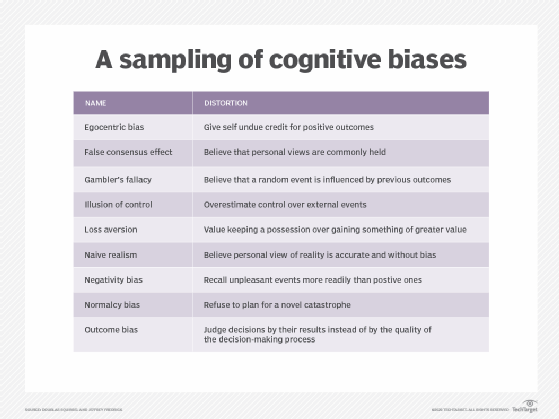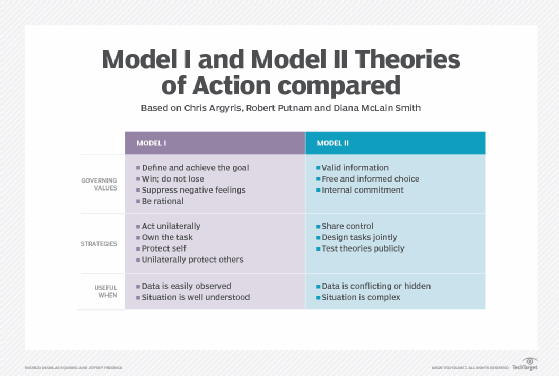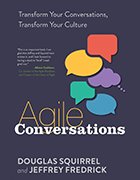Creating agile conversations in digital transformation initiatives
Douglas Squirrel and Jeffrey Fredrick, authors of the book 'Agile Conversations,' dive into the significance of improved conversations while undergoing digital transformations.
The following is a Q&A with Douglas Squirrel and Jeffrey Fredrick, two software developers who wrote the book Agile Conversations: Transform Your Conversations, Transform Your Culture, which provides insight on how organizations can improve conversations in the workplace -- especially in the digital age -- and why it's essential. After the Q&A, we've provided an excerpt from Chapter 2 of their book.
How did you discover the importance of improved conversations in making digital transformation initiatives successful?
Douglas Squirrel and Jeffrey Fredrick: When we watched change initiatives fail over and over, at multiple clients, who were trying a naive, paint-by-numbers approach. It's far too easy to put in place a set of practices and then have those practices become meaningless rituals, all because you failed in building the foundation of trust, fear mitigation and joint design of solutions that make real change possible.
What do you mean by 'meaningless rituals?' Can you give an example of how improved conversations would help?
Squirrel and Fredrick: Organizations heading into a [digital] transformation [initiative] often make the mistake of focusing on a list of techniques. They mandate 'ceremonies' like daily standups, backlog grooming and planning sessions without any attempt to adjust them to their local circumstances or to involve participants in jointly designing the changes. This 'cargo cult' approach means the organizations are mimicking the visible attributes of the successful organizations that inspired them, but they are missing key elements like trust and psychological safety that are harder to see. The result is disappointment when they don't see the agile benefits they expect, like speed and flexibility.
 Douglas Squirrel
Douglas Squirrel
Instead of concluding that 'this doesn't work here,' we urge organizations to invest the time and energy to learn how to have the five key conversations because the result is that teams get aligned with business goals and, therefore, are able to make meaningful commitments for which they're accountable, whether or not they use particular ceremonies.
Can you briefly describe what the five conversations are and how CIOs and other IT leaders can benefit from them?
 Jeffrey Fredrick
Jeffrey Fredrick
Squirrel and Fredrick: The first two are the Trust and Fear Conversations. We hear platitudes about the importance of improving in these areas but far too little practical advice on how to achieve [them]. There are specific, learnable techniques, backed by decades of social science research, that reliably build trust and reduce fear. We describe these methods in detail with many examples.
We then move onto the Why Conversation. Unlike Simon Sinek, we don't recommend that teams start here. You need the basis of the Trust and Fear conversations before you can jointly -- not unilaterally -- build a Why using the methods we describe. Once you do, your teams need much less direction and will surprise you with their agility and creativity.
Finally, once we trust each other, have mitigated our fear, and we know where we are going and why, we are ready for the Commitment and Accountability Conversations. Again, there are specific, learnable techniques like the Walking Skeleton and Briefing/Back Briefing that make these conversations work and the result is what we all thought we were getting from our digital transformation [initiatives] in the first place: reliable feedback, rapid iteration and technical solutions that work.
The following is an excerpt from Chapter 2 of Agile Conversations: Transform Your Conversations, Transform Your Culture.
This chapter will prepare you for the key relationship-building conversations you need in order to escape the feature factory: the Trust Conversation, the Fear Conversation, the Why Conversation, the Commitment Conversation, and the Accountability Conversation. Before you tackle the specific conversations, however, it is important to learn how to analyze and build your conversational skills generally. You will learn about why conversations are humanity's unique superpower and how to harness this power effectively through study and practice.
This chapter will also describe the core challenge to improving our conversations, which is that our behavior doesn't match our beliefs, and we are unaware of the gap. To combat this problem, we will provide a process to help you become aware: the Four Rs. We will show you how to Record your conversations, how to Reflect on them to find problems, how to Revise them to produce better alternatives, and how to Role Play to gain fluency. Finally, we will provide some sample conversations that will allow you to see the process in action.
Once you have the foundation of the Four Rs, you'll be ready for Part II of the book, where you will learn how to have each of the specific conversations.
Conversations: Humanity's Secret Weapon
Our Special Power
In his book Sapiens: A Brief History of Humankind, Yuval Noah Harari explores what has allowed humans to become the dominant species on the planet. His answer is that we have a special kind of communication, unique among animals.
Many animals can communicate the idea "Run away from the lion!" through barks, chirps, or movement. Building on top of that, the development of human and animal communication seems to have been driven by the need to share information about others of the same species -- the need to gossip. Gossiping allowed us, as social animals, to understand each other and have established reputations; and this, in turn, allowed us to collaborate in larger groups and to develop more sophisticated collaboration. In fact, understanding other humans, developing a "theory of mind," is so important that philosopher Daniel Dennett, in From Bacteria to Bach and Back: The Evolution of Minds, makes the case that our own consciousness arose as a byproduct of understanding the minds of others.
Though our ability to gossip surpasses that of other species, Harari says that what is really unique about human language is our ability to discuss non-existent things. With this special power, we are able to create and believe shared fictions. These fictions allow us to collaborate at tremendous scales and across groups of people who have never met. In this way, a community's belief in a crocodile-headed god can create flood control works on the Nile, as described by Harari in another of his books, Homo Deus: A Brief History of Tomorrow. And a shared belief in continuous improvement can allow us to create a learning environment and a performance-oriented culture rather than a power-oriented or rule-oriented culture, as described in Accelerate: The Science of Lean Software and DevOps: Building and Scaling High Performing Technology Organizations by Nicole Forsgren, Jez Humble, and Gene Kim.
Why Our Power Is Flawed
Conversation makes collaboration possible but not inevitable. We don't live in a world of universal acceptance, peace, and understanding. Earnest and well-intentioned people can disagree, and even come to view another person as an enemy, as "the other." Along with our amazing powers of conversation, we also come equipped with pre-existing, built-in flaws -- our so-called cognitive biases (see Table 2.1 for a sampling of our favorite biases, and Daniel Kahneman, Thinking, Fast and Slow, for many more). These are biases that seem to be built into the functioning of our brains. And these cognitive biases inhibit the sort of collaboration our language makes possible.

Our cognitive biases pose a threat to any adoption of Agile, Lean, or DevOps methods because they can seriously damage collaboration, relationships, and team productivity.
In the previous sections, we described how transparency and curiosity are woven into the fabric of people-centric practices, but these are undermined by a host of cognitive biases. An example is the false-consensus effect, where we believe our own views to be commonly held. This bias makes us less likely to either share our reasoning or to ask about the reasoning of others. What's the point when we believe we already agree? Naïve realism, the belief that we see reality as it is, without bias, is yet more corrosive to team dynamics in that we see any disagreement as a sign that the other party is uninformed, irrational, lazy, biased, or perhaps all of those! Under the influence of these and other cognitive biases, Agile, Lean, and DevOps practices can fail to deliver the promised benefits.
Learning from Conversations
Conversations as an Investigative Tool
Social scientist Chris Argyris studied organizational behavior, particularly in businesses, in a long and illustrious academic career at the business schools of Yale and Harvard. His areas of research included individual and organizational learning, and effective interventions that "promote learning at the level of norms and values." The humble conversation was the central tool Argyris used for investigating group effectiveness and for improving organizational performance. What Argyris found was that conversations, together with the unexpressed thoughts of the participants in those conversations, revealed everything he needed to know about the "theories of action" of the people and organizations he studied.
Argyris and collaborator Donald Schön use the term "theory of action" to describe the logic -- the "master program" -- behind our actions. According to Argyris and Schön, we all have outcomes we want to achieve, and we use our theory of action to choose which steps to take. If my theory of action has a focus on learning, then I will take actions that generate information, like sharing everything I know that is relevant to the situation and asking others about what they know. If my theory of action is centered on getting my own way, then I will only share information that supports my position, and I won't ask questions to which I don't know the answer.
In general we don't explicitly think about our theories of action; however, as with the two examples we just provided, we can understand them after the fact by examining our choice of action. One of the findings of Argyris and Schön is that there is often a gap between what we say we would do in a situation (espoused theory) and what we actually do (theory-in-use).
Defensive versus Productive Reasoning: What We Do and What We Say We Do
Before reading on, consider this question: If you had an important choice to make as a group, how would you recommend the group go about making the decision?
When we ask this question of our audiences, we get remarkably consistent answers. The typical response is something like, "I'd have everyone share all the information they have, explain their ideas and reasoning, and then see if we can agree on the best way to proceed."
If your answer sounded like this, congratulations! You have espoused what Argyris and his colleagues call the Model II Theory of Action, or "productive reasoning." You claim to value transparency, sharing your reasoning and information. You also claim to value curiosity, hearing everyone's thoughts to learn their reasoning and what information they have that you don't. Finally, you claim to value collaboration and jointly designing how to proceed. While you might have used different words, these are commonly understood and accepted practices to increase learning and make better decisions. In fact, you likely do behave this way in nonthreatening situations, where nothing important is at stake. Unfortunately, if you are like the more than 10,000 people that Argyris studied across all ages and cultures (and those we've met!), your behavior won't match your words when the topic is something important -- like introducing a company strategy or leading a cultural transformation.
Argyris and colleagues found that although almost everyone claims to adopt the approaches and behaviors of productive reasoning, things change when the situation is potentially threatening or embarrassing. In those cases, what people actually do closely matches a very different theory-in-use that Argyris terms the Model I Theory of Action, or "defensive reasoning."
We contrast these two theories of action in Table 2.2. When using a defensive reasoning mind-set, people act to remove the threat or potential embarrassment. To do so, they tend to act unilaterally and without sharing their reasoning, they think in terms of winning and losing, they avoid expressing negative feelings, and they attempt to be seen as acting rationally.

https://itrevolution.com/agile-conversations/
 Purchase your copy of
Purchase your copy of





